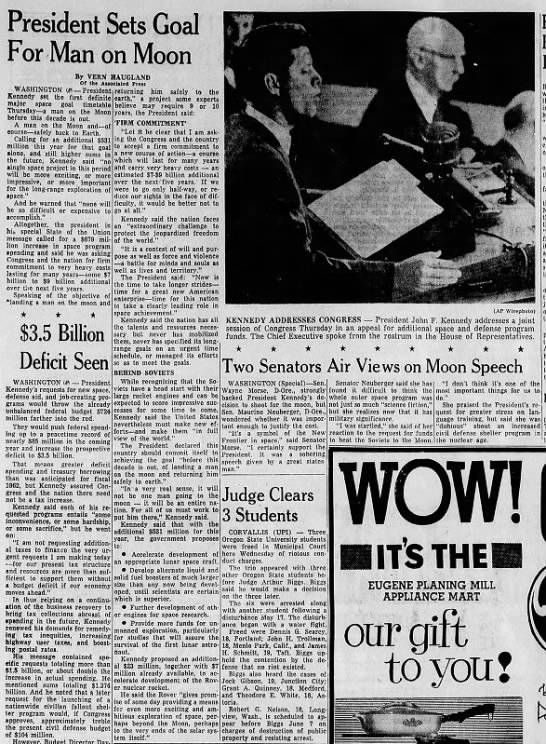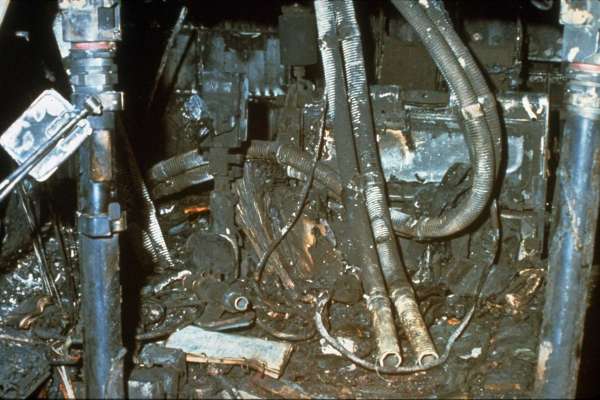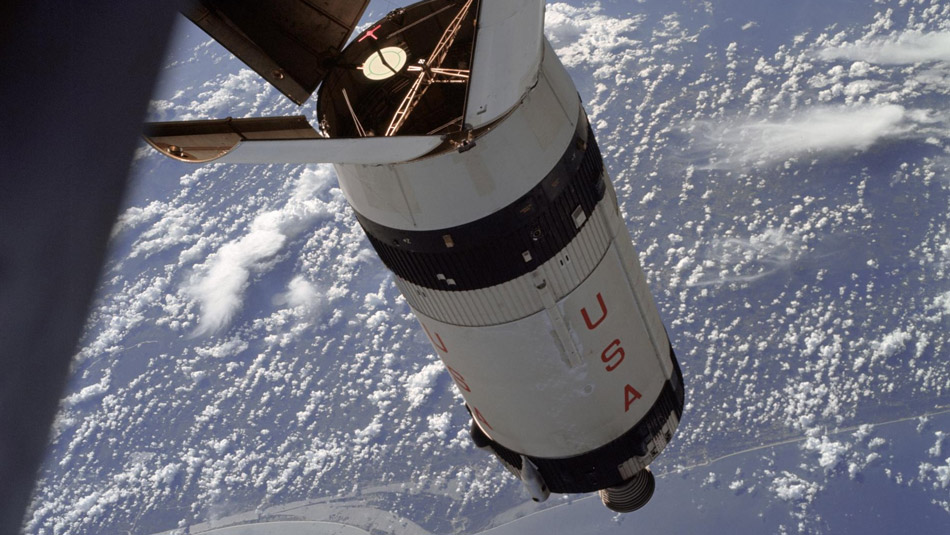
A New Frontier:
The moon was a frontier that had yet to be explored by humans until 1969. The effort to send American astronauts to the moon began in 1961 when President John F. Kennedy delivered a speech on May 25th declaring it the USA’s goal to get a man on the moon by the end of the decade. In 1966, the team of scientists and engineers were ready to launch the first of many upcoming missions in the Apollo series. It marked the beginning of a path towards reaching the set goal.
"We choose to go to the moon in this decade and do the other things, not because they are easy, but because they are hard, because that goal will serve to organize and measure the best of our energies and skills, because that challenge is one that we are willing to accept, one we are unwilling to postpone, and one which we intend to win." - John F. Kennedy (35th president of the USA)

A newspaper clipping the day after President John F. Kennedy (JFK) delivered his speech on America's goals towards reaching the moon along with several perspectives of political figures regarding this event and the plan. www.newspapers.com/clip/31634264/president_john_f_kennedy_announces/. Accessed 3 Nov. 2019.
"We set sail on this new sea because there is new knowledge to be gained, and new rights to be won, and they must be won and used for the progress of all people. For space science, like nuclear science and all technology, has no conscience of its own." - John F. Kennedy (35th president of the USA)
Trial and Error:
As with all scientific and technological advancements, there were numerous failures. On January 27th, 1967, three astronauts died in a manned launch-test at the Kennedy Space Center in Florida. In October of 1968, Apollo 7, the first manned Apollo space mission, orbited Earth and collected important technical data. Apollo 8 and 9 took three astronauts to the dark side of the moon and tested the lunar module in Earth’s orbit. The final stage came with Apollo 10's dry run in May of 1969 for the scheduled landing in July.

The disaster that happened aboard Apollo 1 that took the lives of three astronauts; a single spark from a damaged wire caused a fire to ignite in the pure oxygen envrioment. It spread very fast because of flamable materials that were all around it. thoughtco.com/the-apollo-1-fire-3071067. Accessed 19 Nov. 2019.
"This right here is where history is about to take place. Not only is it great, but it is magnificent an marvelous in all its being. Our children will look upon it and see its beauty - the man on the moon." - Jimmy Wales (entrepreneur and cofounder of Wikipedia)

A capture of the infamous Apollo 7: the first spacecraft out of the Apollo series to carry a crew with it to space, and also the first US spaceflight to carry astronauts since Gemini XII in 1966. nasa.gov/feature/apollo-7-launched-as-race-to-moon-reached-final-stretch. Accessed 8 Dec. 2019.